When it comes to home improvement, one of the most overlooked elements is the garage door. Yet, it’s something we all use daily and often don’t think much about – until it starts to show signs of wear. How much does garage door replacement cost? Whether you’re looking to replace your old door, upgrade to something more stylish, or simply understand the costs involved, knowing the ins and outs of garage door pricing can save you a lot of time, money, and stress.
In this guide, we’ll break down the factors that determine garage door costs, compare different types and materials, and help you make an informed decision that fits both your needs and budget. You’ll also get access to:
Average Cost Of Garage Door
Factors that Influence Garage Door Cost
Save Money on Garage Door Cost
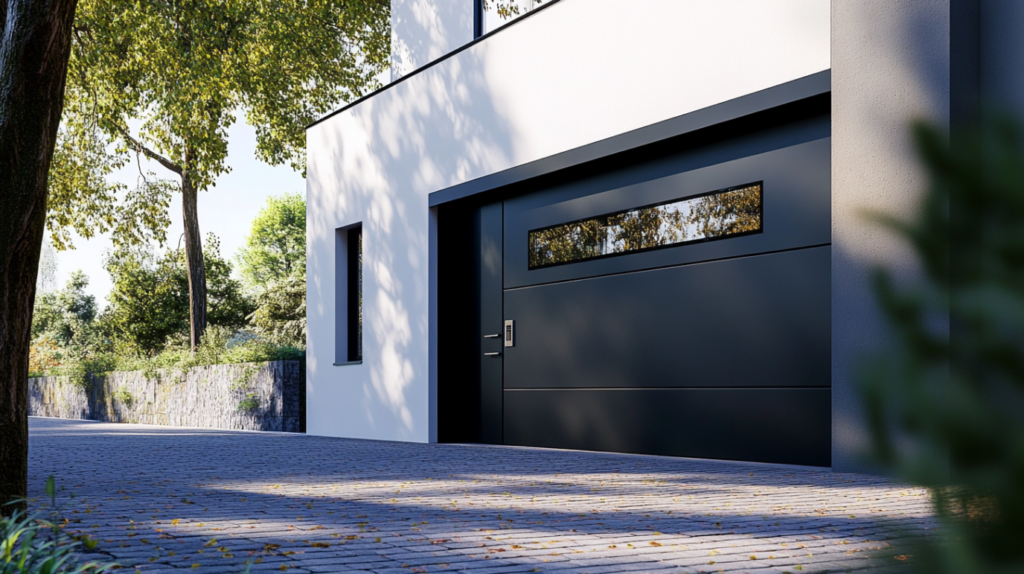
Average Garage Door Cost
Most homeowners cost around $1,300 on a new garage door, but that’s just the starting point. Like any home improvement project, the final cost depends on your specific needs and choices. It’s a bit like customizing a car—you’re not just paying for the door itself; you’ve got the installation, plus the option to add modern features like smart openers, keypads, and insulation.
The design of your garage door has a major impact on the cost. Just like choosing kitchen cabinets or windows, there are options available at every price range. You can go with affordable steel, or choose more premium materials like wood. The size can range from a basic single-car door to a grand three-car setup, and the style can go from simple raised panels to elegant carriage house doors that add a touch of curb appeal.
Garage Door Replacement Cost Factors
When you’re considering a new garage door, there are several key factors that can influence the overall cost. Understanding these elements can help you make a more informed decision and avoid unexpected expenses on your residential house projects .
Garage Door Cost by Door Types
The types of garage doors you select can greatly impact the overall cost. Let’s take a look at some of the most common types of garage doors and what you can expect to pay for each.
1. Sectional Garage Doors
Sectional doors are among the most common types of garage doors. They consist of several panels that are connected with hinges, allowing the door to open vertically and fold neatly above the opening.
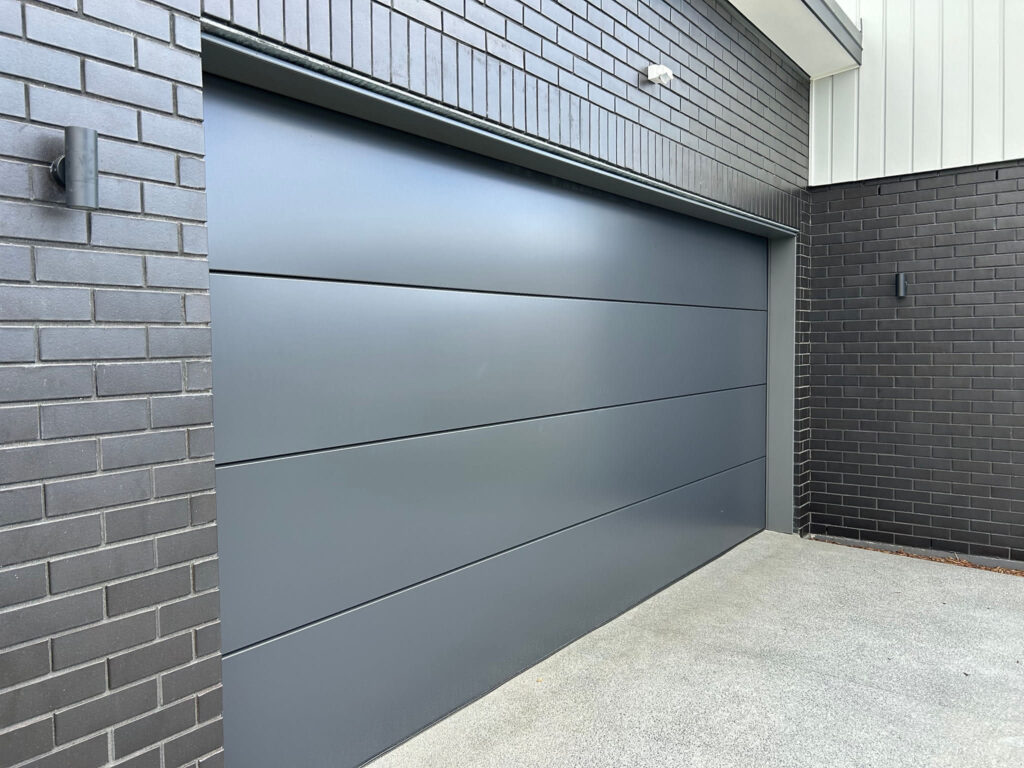
2. Roll-Up Garage Door
Roll-up garage doors are often seen in commercial settings, but they are also available for residential use. These doors coil up into a drum when opened, offering a compact storage solution. Roll-up doors are ideal for tight spaces and work well in homes with limited headroom.
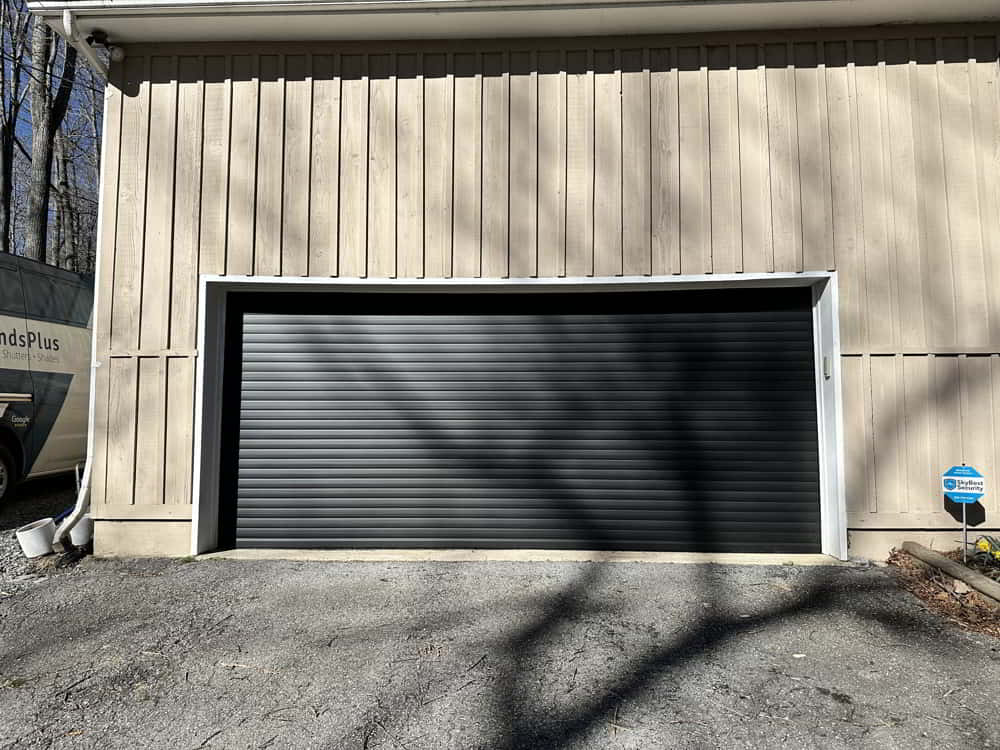
3. Up-and-Over (Tilt-Up) Garage Doors
Tilt up doors swing upward and outward, creating a smooth opening and closing motion. They are generally available in single-piece configurations. Up-and-over doors are easy to operate, but they require more clearance space than sectional doors.
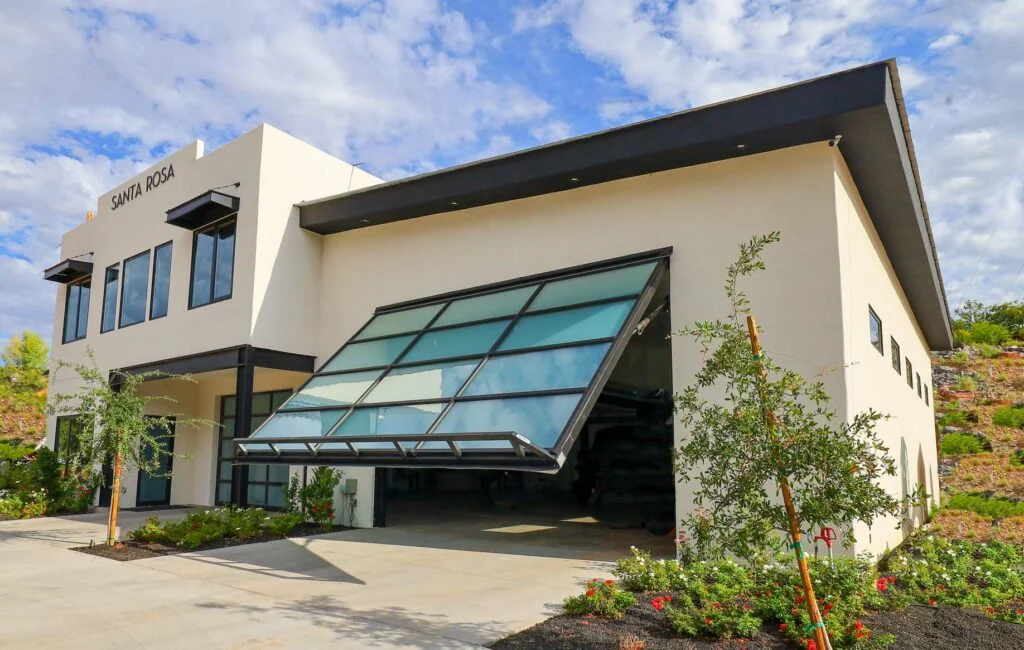
4. Carriage House Garage Doors
Carriage house doors are designed to mimic the old-fashioned, swinging barn doors, but they function just like modern garage doors. They come in both swing-out and sectional variations.
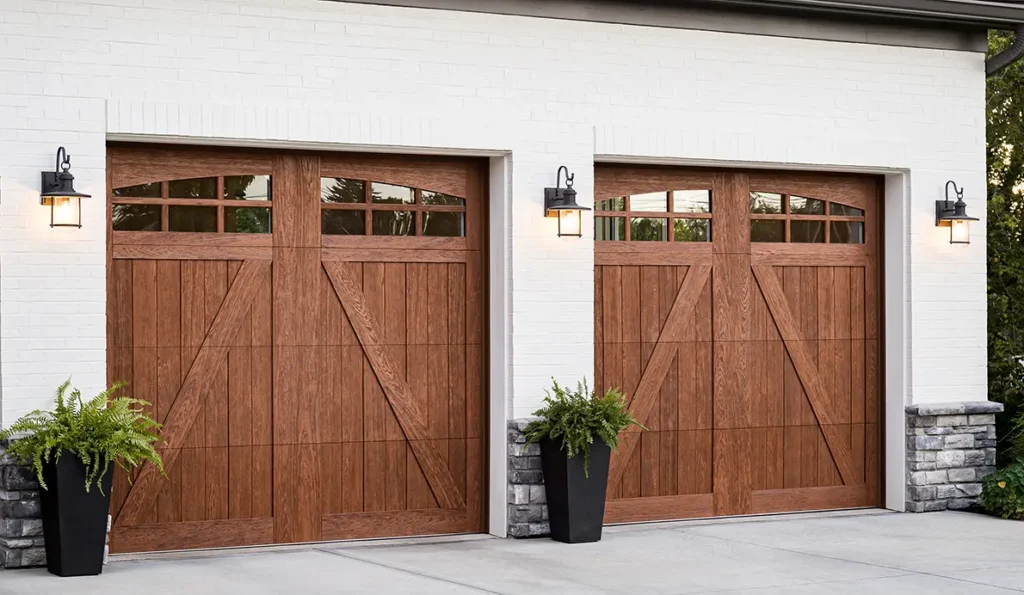
5. Slide-to-the-Side Garage Doors
Slide-to-the-Side Garage Doors are a unique type of garage door that operates differently from traditional garage doors. Instead of the door moving vertically or swinging outward, this door slides to one side of the garage opening. Ideal for homes with limited ceiling height or where space beside the garage is available for the door to slide.
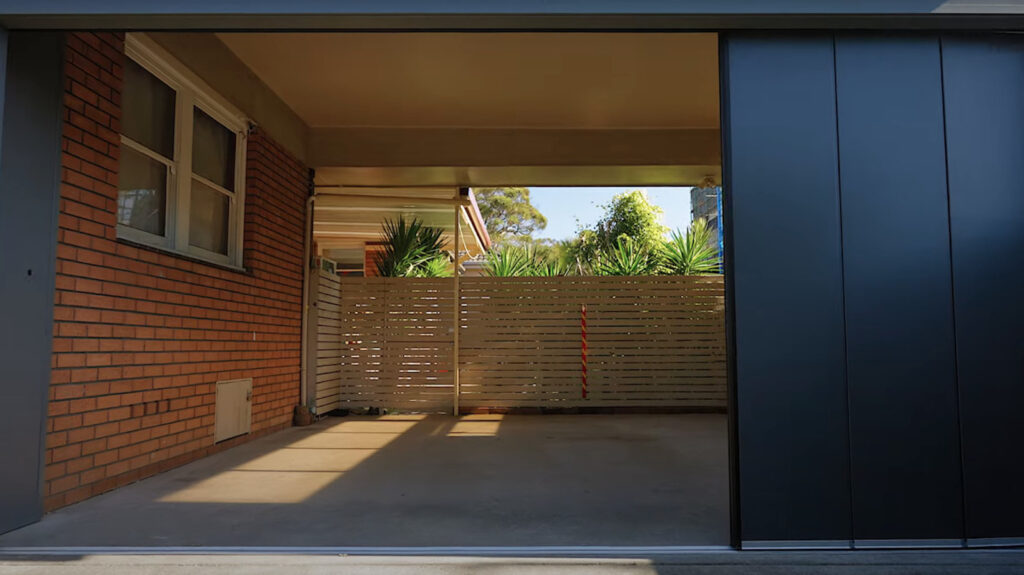
| Garage Door Type | Price Range (USD) | Average Cost (USD) |
|---|---|---|
| Sectional Garage Doors | $900 – $1,300 | $1,200 |
| Slide-to-the-Side Garage Doors | $950 – $3,000 | $1,500 |
| Up-and-Over (Tilt-Up) Garage Doors | $950 – $1,200 | $1,150 |
| Roll-Up Garage Doors | $1,350 – $2,200 | $1,800 |
| Carriage House Garage Doors | $1,300 – $1,700 | $1,500 |
Last updated: July 2025 – Our costs are ballpark averages – get a garage door manufacturer to quote now.
Garage Door Cost by Material
Different materials offer varying levels of insulation, maintenance, and aesthetic appeal, so it’s important to choose the one that best suits your needs and budget.
Steel Garage Doors
Steel is one of the most popular and affordable materials for garage doors. They offer excellent security and can be insulated for better energy efficiency. Steel doors are low-maintenance and resistant to warping, cracking, and shrinking.
- Cost Range: $1000 – $3,500
Wooden Garage Doors
Wooden garage doors can be highly customizable, allowing homeowners to create a unique design that matches home’s aesthetic. Custom wood doors can be significantly more expensive, especially when made from high-quality hardwoods.
- Cost Range: $900 – $4,700
Aluminum Garage Doors
Aluminium garage doors are rust-resistant, lightweight, and easy to maintain. While aluminum garage doors may not offer the same strength as steel, they are often a better choice in coastal areas where saltwater can corrode steel.
- Cost Range: $800 – $2,400
Fiberglass Garage Doors
Fiberglass is another lightweight material that is resistant to dents and offers good insulation. Fiberglass garage doors are typically made with a steel core for added durability. They can mimic the look of wood but are much lighter and require less upkeep.
- Cost Range: $700 – $2,500
Glass Garage Doors
Glass garage doors, often combined with aluminum frames, offer a modern look. They are always more expensive and may require extra care for cleaning and protection against weather elements. They also offer limited privacy unless frosted or tinted glass is used.
- Cost Range: $2,500 – $7,500
Vinyl Garage Doors
Vinyl garage doors are low-cost. They resist salt spray and moisture and don’t rust easily. They’re also easier to install and put less strain on garage door opener mechanisms. However, vinyl garage doors may not be as durable as other materials, especially in harsh climates.
- Cost Range: $600 – $2,000
Garage Door Cost by Size
The demension of your garage door has a direct impact on price. Bigger doors need more materials and larger openers, so costs rise with each extra foot of width.
| Size | Typical Dimensions | Price Range (USD) |
|---|---|---|
| One‑Car Door | 8′ × 7′ | $600 – $1,200 |
| Two‑Car Door | 16′ × 7′ | $1,000 – $2,500 |
| Three‑Car Door | 24′ × 7′ | $2,000 – $4,000 |
The standard single-car garage door in an American home is 7 – 10 feet wide and 7 – 8 feet tall. A single‑car door is the most budget‑friendly option, while double‑car doors cost nearly twice as much. Three‑car doors can double the price of a double‑car model. Always measure your opening precisely and get multiple quotes to lock in the best deal.
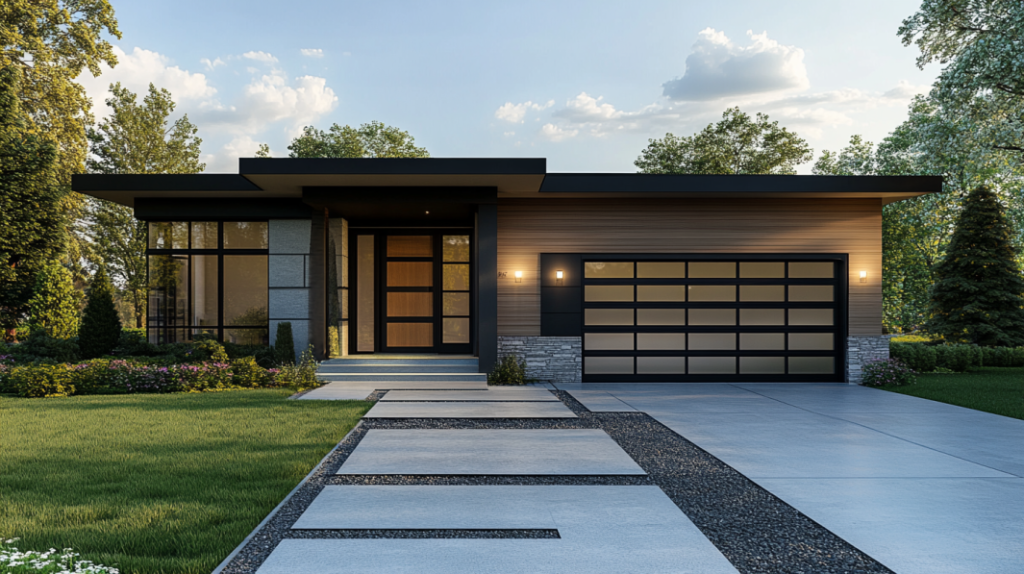
Insulated vs. Uninsulated Garage Doors
Choosing insulated and uninsulated garage doors, just like picking between a winter coat and a light jacket. An insulated door has layers of foam or polystyrene sandwiched between the panels. It traps heat, cuts noise, and helps regulate your garage temperature. An uninsulated door is just a single sheet of metal or material with no internal barrier. It’s lighter and cheaper, but it won’t protect against cold drafts or reduce sound.
Garage door manufacturers rate each door’s insulation capacity with an R-value from 0 to 20. An R‑value of 0 means there’s no insulation, while 20 indicates top-tier thermal performance. You’ll want to consider an insulated door if you spend a lot of time in your garage workshop or store temperature‑sensitive items, especially in colder climates where heat retention matters most.
Cost Difference
Insulated Garage Doors: Typically add $300–$800 to the base price of your garage door. You’ll pay more upfront, but you’ll save on energy bills if your garage is attached to your home.
Uninsulated Garage Doors: Generally cost $600–$1,200 for a standard single‑car garage door. They’re great if your garage is detached or you don’t mind temperature swings.
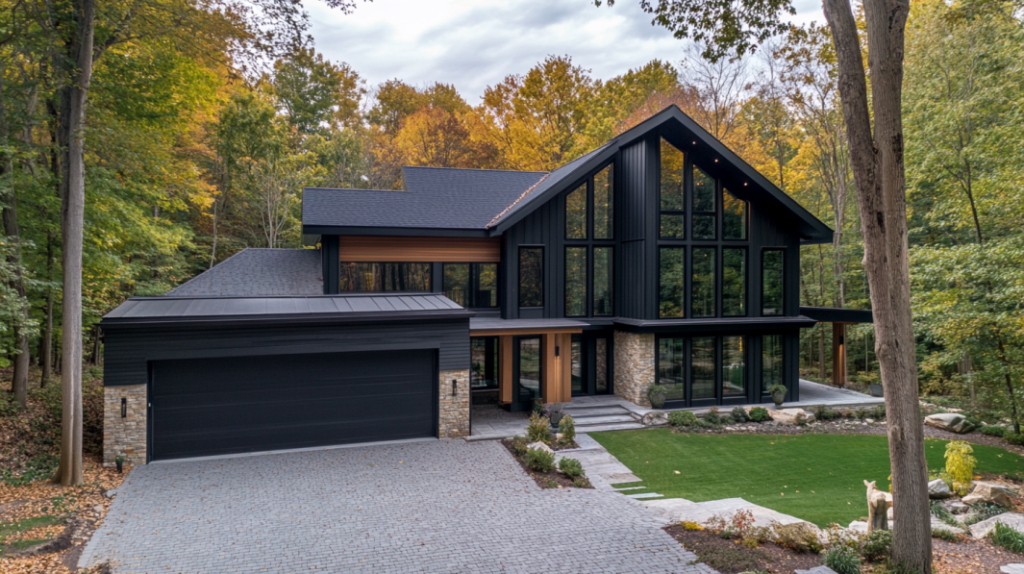
Manual vs. Automatic Garage Doors
Choosing between a manual and an automatic garage door is like deciding whether to ride a bike or drive a car. Both will get you where you need to go, but one offers more convenience.
Standard manual garage doors start at around $600. If you choose an automatic garage door with a garage door opener, the cost of the door will increase by $300-1000.
If you want to save upfront and don’t mind a little muscle, a manual door fits the bill. But for one‑touch access, rolling‑code security, and remote control from anywhere, installing a reliable garage door opener is well worth the extra cost.
Garage Door Installation Labor Cost
Labor costs for garage door replacement can vary widely—from about $300 to $500 on average. In rural areas you might find rates closer to $200, while big cities can push labor above $600.
Some door types take more skill and time to fit than others. Heavy carriage‑style or custom‑fit models often need extra adjustments and hardware. Adding safety features—motion sensors, smart‑lock systems—or installing a brand‑new garage door opener can bump up both the labor complexity and the hours required, nudging your labor costs above that typical range.

Permits
Installing a new garage door may requires local permits, and those permits costs can add up. Depending on your city or county, plan on spending anywhere from $50 to $200 for a basic installation permit. In some areas, especially where wind‑load or historic‑district rules apply, permit fees can climb even higher—and you may need multiple inspections before and after installation.
Beyond the fee itself, the permitting process can affect your project timeline and labor costs. Filling out applications, scheduling inspections, and ensuring compliance with building codes all take time. If your installer handles permits for you, they might charge an additional service fee—usually another $100 to $200—so be sure to factor that into your overall budget.
Removal of Existing Garage Door
Taking out your old garage door is a crucial first step—and it isn’t free. Most contractors charge $100 to $200 to remove and haul away the existing door, depending on its size and weight. If your door has built‑in windows or extra hardware, disposal can be more labor‑intensive and push that fee closer to $250.
Don’t forget that safe removal often involves disconnecting springs, cables, and the opener. If your installer handles all this, you’ll save yourself a DIY headache—but that convenience can add another $50 to $100 in labor. Always confirm what’s included in the removal quote so there are no surprises on installation day.
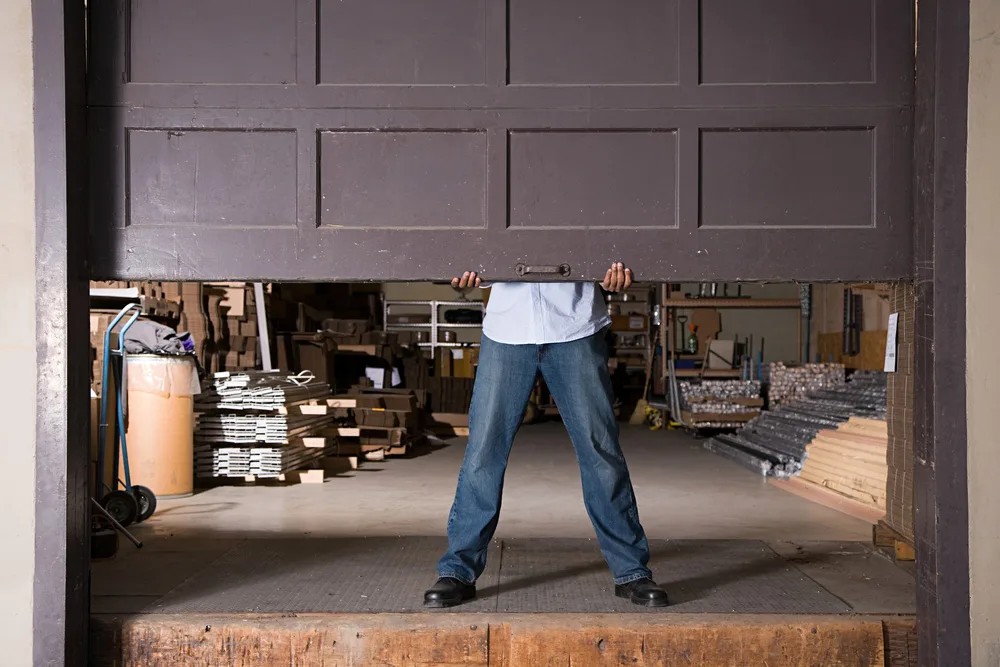
Repair and Maintenance Work
Keeping your garage door in top shape means occasional maintenance and small repairs—think of it as a tune‑up for your home’s largest moving part. Simple tasks like lubricating springs, rollers, and hinges every six months can cost under $50 if you DIY, or around $100–$150 for a pro visit. Replacing worn cables or weatherstripping typically runs $100–$200 per job. These small fixes prevent noisy operation, sticking panels, and premature wear on your garage door opener.
When your old garage doors have more serious issues—like broken torsion springs or misaligned tracks—you’re looking at higher repair bills. Torsion spring replacement usually costs $150–$300 per spring, including labor, while track realignment or section replacement can jump to $200–$400. Regular inspections catch these problems early, helping you avoid emergency service fees and extending your door’s lifespan. A little upkeep now goes a long way toward saving hundreds on major repairs later.
Should You Repair or Replace Your Garage Door?
Deciding whether to repair or replace your garage door often comes down to the extent of the damage and the age of your door. If you’re facing a broken spring, a misaligned track, or a malfunctioning opener, a repair usually runs between $150 and $400, which is a fraction of the $600–$2,500 you’d spend on a full replacement. For doors under 10 years old with minor wear, repairs can breathe new life into your existing setup without breaking the bank.
However, if your door is more than a decade old, shows signs of major rust or rot, or needs multiple parts replaced, you’ll quickly approach the cost of a new garage door—especially once you factor in labor and permit fees. In that case, investing in a replacement not only secures a fresh warranty and improved energy efficiency but also lets you upgrade materials, insulation, and style all at once. Think of it like choosing between fixing an old sedan versus trading up for a new model: sometimes, replacing makes more sense than pouring money into an aging system.

Professional vs. DIY Garage Door Replacement
While taking on a DIY garage door replacement can save labor cost. There’s significant risk involved—especially when working with heavy panels, high‑tension springs, and precise opener installations. Hiring a professional installer ensures the job is done safely, correctly, and up to code. Expect to pay $300–$500 for labor on top of the door cost, but you’ll gain:
Safety and Expertise: Pros handle spring tension, track alignment, and opener wiring without risk.
Code Compliance: They pull permits, schedule inspections, and guarantee your installation meets local building standards.
Warranty Protection: Many contractors back their work with labor warranties, giving you peace of mind.
If you value your time, need a flawless installation, or are dealing with a high‑end or custom door, seeking a qualified professional is the smartest—and often most cost‑effective—choice in the long run.
How To Save on Garage Door Cost?
Replacing your garage door doesn’t have to be expensive. Here are some tips to save money:
Shop Around for Quotes: Request at least three detailed estimates from reputable installers, and ask for a line‑item breakdown—door, opener, permits, removal, labor—to compare apples to apples.
Negotiate and Leverage Competing Bids: Use lower written quotes as leverage; many contractors will match or beat a competitor’s price.
Watch for Promotions and Rebates: Look out for seasonal sales, manufacturer incentives, and local utility rebates on energy‑efficient doors to shave off your bill.
Bundle Multiple Doors or Services: If you’re replacing more than one door or adding services like frame repairs or insulation, ask about volume discounts to lower the per‑door cost.
Explore Financing Options: Take advantage of low‑ or zero‑interest financing plans to spread payments over time and make a higher‑quality door more affordable.
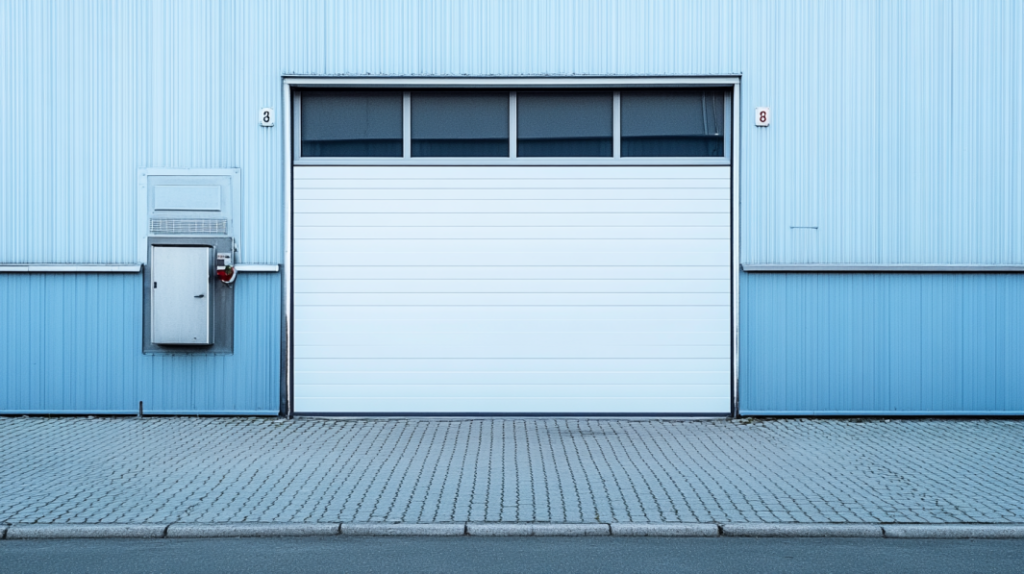
Choose PA Home's Garage Doors
Choosing a new garage door is a big decision, and you shouldn’t have to navigate it alone.
Our experienced professionals will guide you through every step of the process—from selecting the right material and style to ensuring proper installation and maintenance.
As a trusted garage door manufacturer, PA Home deliver durable, customizable solutions and hands‑on support so you can enjoy lasting curb appeal and peace of mind.
Ready to get started? Contact us today for a free consultation and quote!
FAQs about Garage Door Prices
When selecting a garage door manufacturer, consider the following factors:
Reputation and Experience: Look for a company with a solid track record and years of experience in the industry.
Product Quality: Ensure they offer high-quality materials, such as durable steel, insulated doors, or premium wood.
Customization Options: Check if they provide a range of customizable styles, colors, and sizes to suit your needs.
Installation Services: Choose a manufacturer that offers professional installation or works with trusted contractors.
Customer Service: Look for responsive customer support throughout the purchase, installation, and maintenance process.
The cost of a new garage door typically ranges from $600 to $2,500, depending on factors like material, size, and style. Installation costs add an extra $300 to $500.
With proper maintenance, a garage door can last 15–30 years. Insulated doors and high‑quality materials tend to have a longer lifespan. Regular maintenance, such as lubricating moving parts and checking for wear, can extend the life of your door.
Yes, a quality garage door can significantly enhance your home’s curb appeal, increase security, and provide energy efficiency. A well‑made door also adds value to your home, which can help with resale value, especially in areas where the garage is an integral part of the home’s exterior design.
Upgrading to a new garage door improves your home’s appearance, enhances security, and increases energy efficiency. Insulated doors, for example, help maintain your home’s temperature, reducing heating and cooling costs. Additionally, modern doors are quieter, more durable, and require less maintenance than older models.


